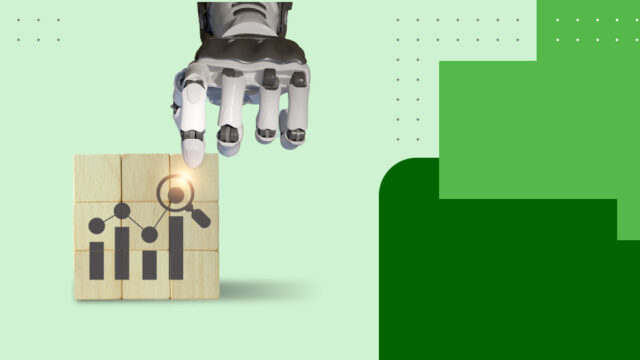
Data Ingestion in the Cloud Migration Process
Discover what data ingestion is and the crucial role it plays in migrating accounting firms to the cloud.
In the ever-expanding domain of cloud computing, data ingestion is a critical initial process, a cornerstone that forms the basis of cloud migration initiatives. Data ingestion refers to transporting data from various sources into a storage medium where an organization can access, use and analyze it.
Different forms of data ingestion
Batch processing, real-time processing and Lambda processing are three distinct data processing techniques that offer unique advantages based on specific data requirements and processing needs. By understanding the differences between these three methods, your business can choose the most suitable approach based on your specific data requirements and processing needs.
Batch processing
Batch processing is a technique that involves collecting data in predefined batches and processing them periodically. It’s an efficient method when dealing with large volumes of data, such as logs or historical records. Processing the data in batches allows for more efficient resource allocation, and it can be scheduled to run during off-peak hours.
Real-time processing
On the other hand, real-time processing involves collecting and processing data as soon as you receive it. This method is ideal for time-sensitive data that requires immediate attention, such as financial transactions or sensor data from real-time monitoring systems. Real-time processing enables quick responses and decisions based on the most up-to-date information.
Lambda processing
In contrast, Lambda processing takes a hybrid approach by combining both batch and real-time processing. It involves processing data in small, manageable batches while still handling each batch in real time. This approach offers the benefits of both batch and real-time processing, providing a balance between efficiency and responsiveness.
Data sources
Data ingestion is fueled by a vast array of information sources. These sources encompass databases, file systems and streaming data stores. The process involves gathering data from diverse channels like IoT devices, social media platforms and enterprise applications. The data itself can take different forms — structured or unstructured. Additionally, you can uncover this information in various formats, such as text, audio, video or image.
Benefits of data ingestion
Data ingestion offers numerous advantages that your business can leverage to enhance the quality of its data and make swift, informed decisions.
More reliable data
Enhanced data quality stands as a critical benefit of data ingestion. By gathering and processing data in a standardized manner, you can guarantee your data’s accuracy, completeness and error-free nature. This advantage can empower you to make superior decisions and take action based on reliable information.
Improved efficiency
Another benefit of data ingestion is heightened efficiency. By streamlining the collection and processing of your data, you can reduce the amount of time and effort required to extract insights. This approach saves valuable resources and allows your firm to respond more swiftly to changes in the business environment.
Real-time information
With the ability to ingest data in real time, or near real time, your organization can access up-to-date insights and promptly respond to emerging trends or critical events. This agility is crucial in today’s fast-paced business landscape, where staying ahead of the competition requires timely, accurate information.
Advanced analytics
Data ingestion empowers advanced analytics and machine learning. By ingesting data from diverse sources, including structured and unstructured data, you can unlock hidden patterns, correlations and trends that drive innovation and strategic decision-making. Combining data ingestion and advanced analytics enables you to derive actionable insights and make data-driven decisions that keep your organization ahead of the curve.
Required skill sets
Data ingestion demands a diverse set of skills. Some examples include the following:
- Data engineering: This skill set involves converting raw data into a practical and usable format. This stage typically includes constructing pipelines, migrating data from its source and transforming it into a standardized and easily analyzable form.
- Data modeling: This practice focuses on organizing and mapping out how you’ll hold data in your databases or other storage systems. This phase also includes establishing connections between diverse datasets.
- Data analysis: Data analysis is the process of comprehending and extracting meaningful insights from data. It utilizes statistical methods, algorithms and visualization techniques to gain a deeper understanding of complex data.
- Data governance: Data governance refers to managing the availability, usability, integrity and security of your organization’s data. It involves defining policies and procedures for collecting, storing and sharing data while ensuring compliance.
By harnessing these skills, your firm can effectively manage its data, enabling informed decision-making and driving business growth. If your staff lacks the necessary in-house skills, you can outsource data ingestion tasks to external experts who specialize in this field. This strategic approach allows you to leverage the expertise of such professionals while focusing on other core aspects of your business’s operations.
Challenges
Regarding data ingestion, numerous challenges can arise during the process, including the following:
Vast amounts of data
One of the primary obstacles is handling large volumes of data, which demands specialized tools and techniques for collection and processing. For example, the sheer size of a dataset can create network bandwidth, storage space and computing resources issues.
Furthermore, it becomes increasingly challenging to maintain real-time ingestion for data streams that are continuously increasing in size. This problem requires careful planning and optimization to ensure efficient and timely extraction of relevant information.
Poor data quality
Data quality can be a significant obstacle when you’re ingesting large volumes of data. Incomplete, inconsistent or erroneous data can drastically impact the accuracy and reliability of the insights you derive. This issue can lead to incorrect or misleading conclusions, causing delays in your decision-making process.
Formatting issues
Data variety can present a significant roadblock, as you may need to collect and process data from various sources with different formats and structures. This obstacle requires careful consideration to ensure your data is adequately organized and integrated into your system.
Compliance consideration
Apart from technical challenges, you must address legal and ethical considerations during the data ingestion process. Businesses must comply with regulations such as the EU’s General Data Protection Regulation (GDPR) and the California Consumer Privacy Act (CCPA), which require that personal information be safeguarded and individual privacy rights be respected. Failing to do so can result in severe consequences, including legal penalties and reputational damage.
Scaling for future growth
Your data ingestion framework must also be scalable to accommodate future growth and other changes. As you continue to accumulate more data, your existing procedures must be able to handle the increasing volume without sacrificing performance or accuracy. Additionally, as your firm evolves and adopts new technologies, your data ingestion systems must be adaptable to seamlessly integrate the new data sources.
How does data ingestion fit into cloud migration?
Data ingestion is a crucial and fundamental aspect of cloud migration. By undergoing the process of data ingestion, you can ensure that the data is readily available in the cloud, enabling its utilization by various applications running within the cloud ecosystem. This seamless integration helps optimize the efficiency of your cloud-based operations, facilitating smoother and more streamlined workflows.
Best practices for data ingestion
To optimize your organization’s data ingestion strategy, here are some essential best practices to consider:
- Define data sources: Identify the data sources you wish to capture. This step specifies the required data formats and structures for a successful ingestion. Understanding your data sources will help you avoid issues during the ingestion process and ensure you capture the correct data.
- Determine data retrieval frequency: How often do you need to retrieve data from your sources? This answer depends on the nature of your business and the use cases for which you require the data. Some companies require near-real-time ingestion, while others need data updates only once a day. You need to define the frequency of your data retrieval to ensure timely and accurate insights.
- Implement data quality checks: Data ingestion can be daunting, especially when you’re dealing with large datasets. It’s crucial to implement data quality checks to ensure the data you’re processing is accurate and complete. These checks can include verifying data formats, identifying missing values or outliers and detecting any anomalies in the data.
- Use automation tools: Manual data ingestion can be time-consuming and prone to human error. To streamline the process, consider using automated data ingestion tools to handle repetitive tasks such as data extraction, transformation and loading.
- Plan for scalability: As your business grows, so will your data needs. Planning for scalability is vital to accommodate future growth. This approach may involve choosing scalable infrastructure, implementing parallel processing techniques and regularly reviewing and optimizing the ingestion process.
Conclusion
Data serves as the lifeblood of modern businesses. Data ingestion is of the utmost importance as it ensures that your data is stored in a manner that facilitates accessibility for various computational and analytical tasks. Proper execution is vital for companies to prevent data loss, corruption or the emergence of data silos. These issues hinder the smooth flow of information and can complicate cloud infrastructure development.
Given the increasing pace of cloud migration activities, gaining a comprehensive understanding of the intricacies of data ingestion has become indispensable. Establishing a robust data ingestion strategy lays the foundation for a successful digital transformation journey.








